The Huawei MateBook X Pro has combined everything I loved about the MateBook 14s with new features, a 11th-generation i7 Intel processor and a sleek, portable design. With a speedy performance and a vibrant screen, this is one of the best productivity laptops we've tested, although that high price is difficult to ignore.
Pros
- Intuitive trackpad gestures
- Vibrant and bright display
- Thin and lightweight design
- Powerful processor
Cons
- Expensive considering lack of discrete GPU
- Doesn't include 12th-gen Intel processor
- Mediocre battery life
Key Features
-
11th-generation Intel Core processors The Huawei MateBook X Pro comes with an 11th Gen Intel Core i7-1195G7 Processor which allows for speedy load times and a great performance
-
Windows 11 This laptop comes preinstalled with Windows 11, which allows for more intuitive navigation
-
Touchscreen capabilities The touchscreen support makes productivity work easier, with the ability to zoom in and navigate articles easier than just with a mouse
Introduction
Packing both beauty and brawn, this model of the Huawei MateBook X Pro (2022) comes packed with the 11th-generation i7 Intel processor, while looking as sleek and professional as ever.
The model I tested came with an 11th Gen Intel Core i7-1195G7 processor, which allows for extremely quick processing speeds and navigation, making it another great productivity laptop from Huawei.
It’s worth pointing out that this laptop has now been succeeded by the Huawei MateBook X Pro (2022, 12th Gen), which features a more powerful processor for a speedier performance. I recommend checking out this review before making a final decision.
That said, the 11th Gen version is still worth considering if available at a discounted price. Here is how I got on with the Huawei MateBook X Pro.
Design
- Great build quality
- Lightweight design
- Sleek chassis
In keeping with the trend, the MateBook X Pro looks very similar in design to the MateBook 16. The aesthetic is still reminiscent of the MacBook Pro series, which is no bad thing, as the MateBook series in general comes in as one of the best looking laptops available.
The super-thin screen bezel is even thinner, with a 92.5% screen-to-body ratio to provide optimum screen space.
Coming in at 1.38kg, this is perfectly portable and can fit into most bags. I’ve been carrying this laptop around religiously for the last two weeks and I’ve never had an issue with it feeling too heavy or unmanageable, with the slight heft also making it feel sturdier than some lighter laptops out there, like the Samsung Galaxy Book 2 Pro.
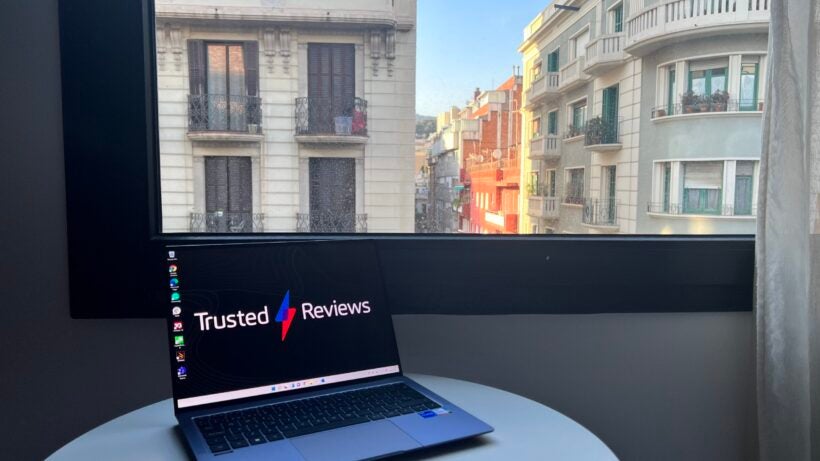
As usual, the aluminium design is very resistant to smudges and fingerprints, which keeps the laptop looking sharp. In the same vein as the MateBook 14s, I would have liked to see some more colour options this time around, but the Space Grey colouring is still a classic that looks very professional.
Yet again I love the keyboard; it sits at the perfect depth for me and is very responsive as well as being fairly quiet.
Arguably my favourite aspect of this laptop sits within the trackpad; new touchpad gestures allow you to change the volume, take a screenshot and scrub through a video or through text. The trackpad also comes to the edge of the chassis, giving you more room to work with.
If you scroll up and down the right-most side, haptic feedback is triggered, with the volume changing as you scroll up and down. Scrubbing the top of the trackpad will move a media clip backwards and forwards, or move your cursor if you’re writing text.
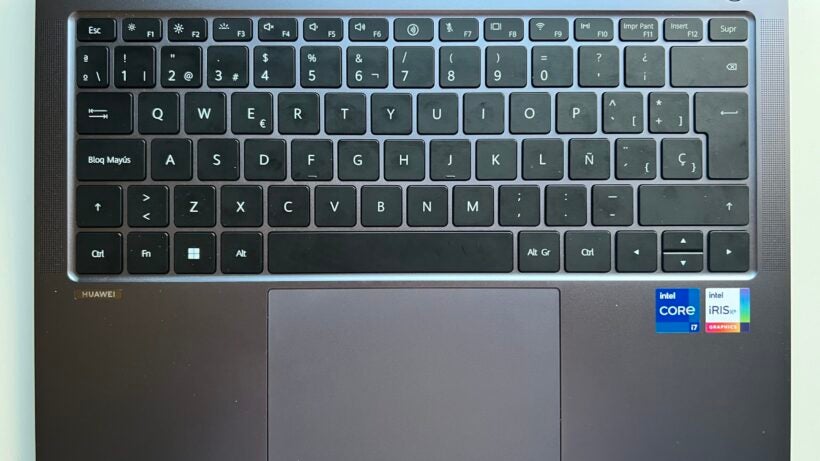
This is undoubtedly one of the best aspects of the laptop, as it streamlines your experience and makes muting music or going through text indefinitely easier. Double knocking on the trackpad will also take a screenshot, which is a small add-on but makes a world of difference during everyday use.
Moving onto the webcam, the 720p HD is not the sharpest camera available in a laptop, but is perfectly serviceable, and I’ve never gotten any complaints about my camera-feed quality during Zoom calls. It also sits inside the top bezel instead of the keyboard, which provides a more flattering angle.
In terms of ports, I am thrilled to find that the USB-C charging ports are now located on both sides of the laptop, with two on each side alongside one 3.5mm headphone jack. Both the MateBook 14s and 16 had two on the same side, which could be annoying when it came to charging.
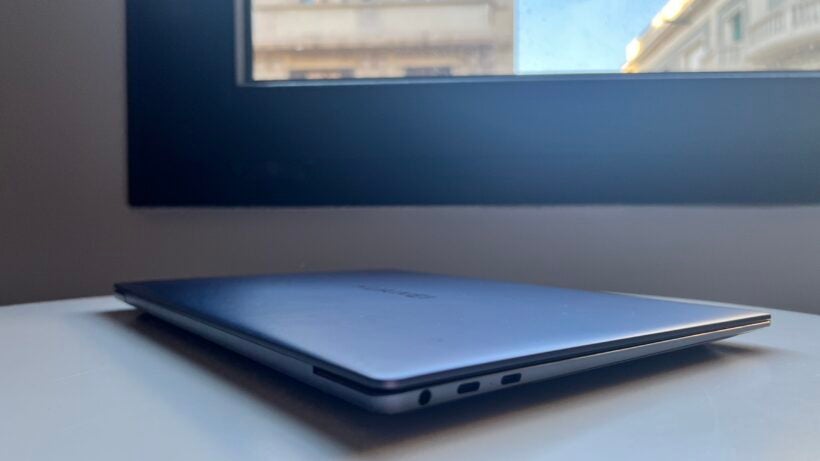
The thin design rules out a USB-A or HDMI port, and while for some that might be a hindrance, I’ve not had any issues. And if you’re desperate, you can always purchase a separate adaptor.
Touching on the sound, the six speakers inside the MateBook X Pro offer up balanced and well-rounded audio. I have been binging the Encanto soundtrack and the voices of each character shine through clearly, with the high notes sounding crisp and not getting muddled. In the same vein, I found the laptop to handle action movies surprisingly well, with large explosions sounding clear and impressive for a smaller laptop.
And finally the microphone; the MateBook X Pro features four microphones that allows your voice to be picked up even if you’re fairly far away. I’ve never received any complaints that my voice sounded tinny or distorted over Zoom.
Screen
- Sharp display with 3120×2080 resolution
- 3:2 makes productivity a breeze
- Improved screen-to-body ratio
The MateBook X Pro is packing a 14.2-inch display, with a refresh rate of 90Hz which allows fast motion to look more clear, which can be useful when quickly scrolling down your social media feed.
Coming with a 10-point multi-touch sensitive screen, I could zoom in to pictures and maps with ease, with the touchscreen capabilities coming in handy when I was looking at tables or big chunks of text. While not a must-have for a prouctivity laptop, the inclusion is defientely appreciated and I enjoy having the choice.
The screen to body ratio sits at 92.5%, which is an improvement over the MateBook X Pro 2021, which sat at 90%.
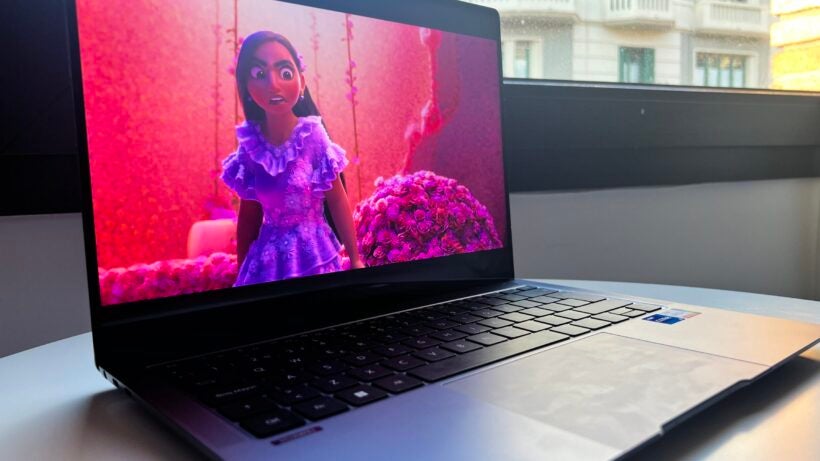
While an OLED would have been welcome to make it competitive with the Dell XPS 13 OLED, especially with its high price point, the high 3120×2080 resolution keeps media looking sharp and detailed, especially compared to screens that are limited to Full HD (1920×1080).
In order to back up my anecdotal evidence, I tested out the MateBook X Pro’s screen quality with various industry tests. Using a colourimeter, the brightness scored a stunning 567.75 which is far above the 300-nit average of the laptop. Its underwhelming performance at producing dark colours does pull the contrast down to 1356:1, but that’s still a very respectable score.
The high brightness also makes this laptop great for bright outdoor use, which I discovered the rare times I ventured outside to work.
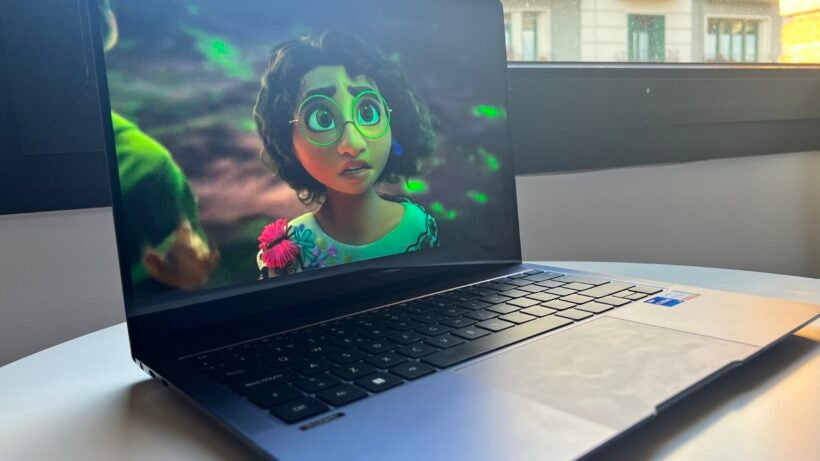
Back to Encanto, the colours looked vibrant and bright, with no noticeable red or blue hues disturbing scenes with pure white. The impressive colour accuracy can be backed up by further tests, as the 99.2% sRBG score (alongside the 87.5% and 93.2% scores for the Adobe RGB and DCI-P3 tests) show that the MateBook X Pro is capable of producing accurate colours to the required standard for professional creators.
While watching movies on this laptop, I thought that the colours looked punchier, with these scores beating out all previous MateBooks that I’ve reviewed. I haven’t done much creative work with this laptop past casual photo editing, and it seems like this laptop would work great for colour-sensitive work, provided that it’s not too graphically intense.
Performance
- 11th-gen Intel chip is speedy
- Loads up in seconds
- No option for a discrete GPU
The MateBook X Pro performed great during the CPU testing, with quick processing speeds and no lagging whatsoever, no matter which task I was doing. The model I used came with an 11th-generation Intel Core i7-1195G7 chipset.
Personally, even though it would have been a bonus to use the new 12th-gen Intel chips running on Alder Lake, the i7-1195G7 ran perfectly well and kept everything constantly running smoothly. But if having the latest chipset is important to you, I would advise looking elsewhere.
Users also have the choice of using Performance Mode, which boosts the CPU thermal design power to 30W. I have dipped into Performance Mode on occasion and the improvement is noticeable, with even faster boot-up times and better performance overall. However, this feature will also drain battery faster, so I’d recommend limiting its use.
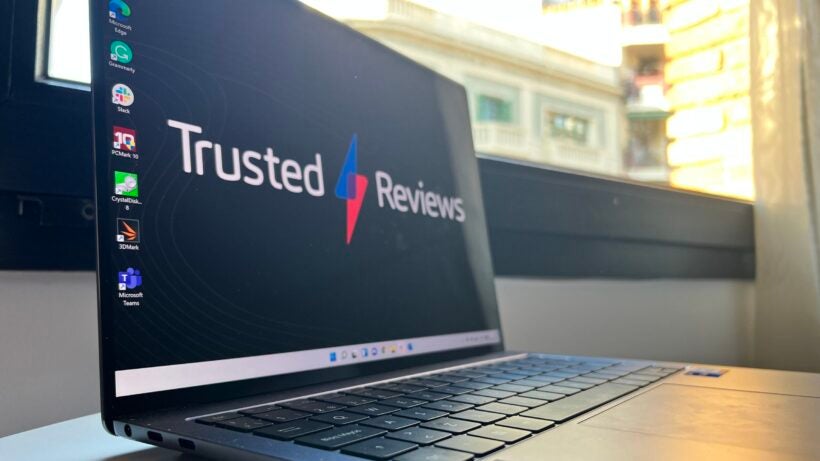
Huawei has also packed the MateBook X Pro with a new and improved cooling system, which I noticed immediately, as it runs a lot cooler than the MateBook 14s. The company claims that there is a 60% increase in airflow and a 100% increase when it comes to heat dissipation, which I think is noticeable, as only the bottom of the laptop heats up slightly when I’m working with dozens of Chrome tabs open.
Moving onto the benchmarks, the MateBook X Pro performed well, almost continually beating out both the MateBook 16 and 14s, as well other brands like the LG Gram 17 (2021). As expected, it wasn’t able to outpace the MacBook Air, though considering the immense power of the Apple Silicon M1 chipset, that wasn’t too shocking.
| Huawei MateBook X Pro (2022) | Huawei MateBook X Pro (2021) | Huawei MateBook 14s | LG Gram 17 (2021) | MacBook Air M1 | |
| Processor | Intel Core i7-1195G7 | Intel i7-1165G7 | Intel Core i7-11370H | Intel Core i7-1165G7 | Apple M1 |
| Geekbench 5 single-core | 1556 | 1518 | 1591 | 1564 | 1731 |
| Geekbench 5 multi-core | 5643 | 5048 | 5840 | 5435 | 7308 |
| PCMark 10 | 5229 | 4816 | 5165 | 4510 | N/A |
| 3DMark Time Spy | 1853 | 1469 | 1810 | 1335 | N/A |
Despite its Pro moniker, the Huawei MateBook X Pro does not feature a discrete GPU. That’s a big issue for a laptop at this price. If you’re looking to engage in 3D rendering or heavy video editing, you would probably be best looking elsewhere, as the integrated GPU will have limited power on offer. That’s not to say you can’t play some casual games or photoshop, but anything more graphically demanding will be pushing it.
Moving onto the RAM and storage, there is up to 1TB of storage and 16GB RAM, which is more than enough for productivity work. The SSD impressed, with a read score of 3496MB/s and a write score of 2697MB/s. These scores translated to an impressive speed when running or installing software to the physical drive.
And coming in last but not least, the MateBook X Pro came preinstalled with Windows 11 for free, which offered up improved navigation and an overall better experience than Windows 10.
Battery life
- Reached 8 hours 43 minutes in our testing
- Super-fast USB-C charging
The MateBook X Pro has done a fair bit of travel at this stage and never let me down, even when I completely forgot my charger. Taking it to MWC was a real test, as it was getting whipped out constantly without time for a charge, and it never dropped below 20% before I managed to charge it again.
During the PCMark 10 Office battery benchmark, the laptop clocked off after 8 hours and 43 minutes, which should be long enough to get you through most tasks.
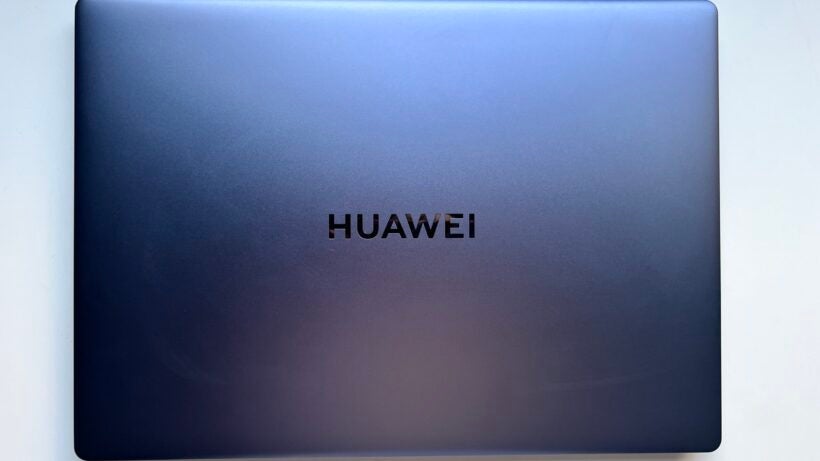
However, you can find other laptops with far better stamina. The Lenovo Yoga Slim 7 can last over 14 hours on a single charge, for example, although does admittedly have a lower screen resolution.
Latest deals
Should you buy it?
If you want a fantastic productivity laptop
The MateBook X Pro is almost faultless, with an intuitive trackpad and a gorgeous screen, you can watch media and work for hours without it heating up or slowing down. It’s improved over the previous MateBook’s and is a joy to use.
If you want a discrete GPU:
Despite its high price and Pro moniker, this laptop does not feature a discrete GPU, which means it’s not a great option for the likes of video editing and gaming.
Final Thoughts
With the biggest downfall being the lack of a 12th-gen Intel processor and option of a discrete GPU, this is still nevertheless a fantastic productivity laptop. Packing a brilliant screen with touchscreen capabilities and intuitive features such as new touchpad gestures, this is a great laptop for both work and play.
Trusted Score
How we test
Every laptop we review goes through a series of uniform checks designed to gauge key things including build quality, performance, screen quality and battery life.
These include formal synthetic benchmarks and scripted tests, plus a series of real-world checks, such as how well it runs the most frequently used apps.
We also make sure to use every laptop we review as our primary device for at least a week to ensure our review is as accurate as possible.
- Spent a week as main laptop
- Used consistent benchmarks for fair comparisons with other laptops
- Tested battery life
FAQs
The laptop is charged via USB-C, with four ports available.
No, the laptop comes with an11th Gen Intel Core i7-1195G7 processor.
Yes, this laptop is capable of running Super Device, a new Huawei feature that allows Huawei users to link their devices together.
Test Data
| Huawei MateBook X Pro (2022, 11th gen) Review | |
|---|---|
| PCMark 10 | 5231 |
| Geekbench 5 single core | 1556 |
| Geekbench 5 multi core | 5643 |
| 3DMark Time Spy | 1853 |
| CrystalDiskMark Read speed | 3495.55 MB/s |
| Black level | 0.4187 nits |
| Contrast ratio | 1356:1 |
| White Visual Colour Temperature | 6538 K |
| sRGB | 99.2 % |
| Adobe RGB | 87.5 % |
| DCI-P3 | 93.2 % |
| PCMark Battery (office) | 9 hrs |
Full Specs
| Huawei MateBook X Pro (2022, 11th gen) Review | |
|---|---|
| EU RRP | €1899 |
| CPU | 11th Gen Intel Core i7-1195G7 Processor |
| Manufacturer | Huawei |
| Screen Size | 14.2 inches |
| Storage Capacity | 1TB |
| Front Camera | 720p HD |
| Battery | 60 Whr |
| Battery Hours | 8 43 |
| Size (Dimensions) | 310 x 221 x 14.5 MM |
| Weight | 1.38 G |
| Operating System | Windows 11 |
| Release Date | 2021 |
| First Reviewed Date | 08/02/2022 |
| Resolution | 3120 x 2080 |
| HDR | No |
| Refresh Rate | 89 Hz |
| Ports | 4 x USB-C, 3.5mm headphone jack |
| GPU | Integrated Graphics: Intel Iris Xe Graphics |
| RAM | 16GB |
| Connectivity | Bluetooth 5.1 |
| Colours | Space Grey |
| Screen Technology | LTPS |
| Touch Screen | Yes |
| Convertible? | No |



